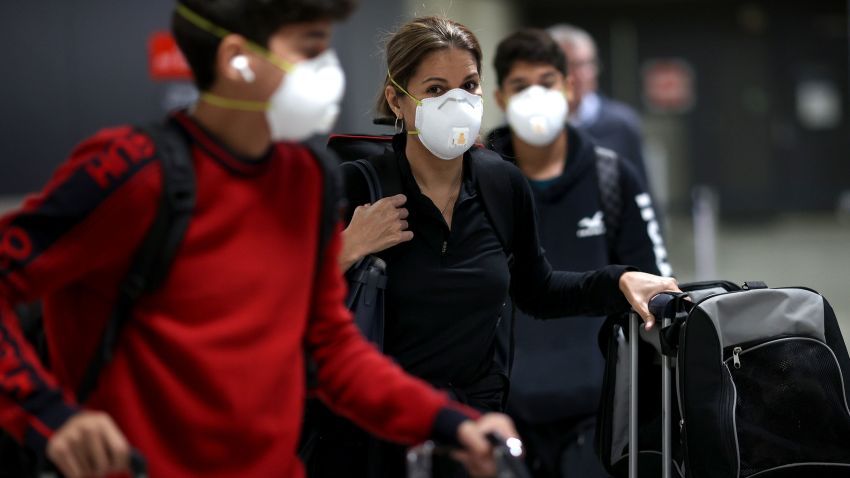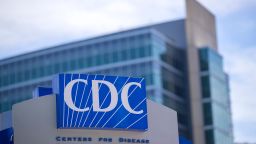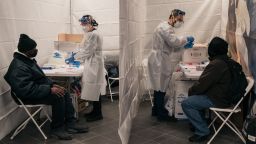The US Centers for Disease Control and Prevention launched its Center for Forecasting and Outbreak Analytics on Tuesday. The center aims to be like the “National Weather Service for infectious diseases,” helping to guide decision-making at all levels.
Data-driven weather forecasts help leaders know when to deploy resources to respond to hurricanes and individuals decide whether they need to bring an umbrella with them when they go out. Similarly, the CDC’s new disease forecasting center aims to guide decisions about broad public health needs like developing vaccines or deploying antivirals, and helping individuals decide whether it’s safe for them to go to the movie theater, Dylan George, epidemiologist and director of operations for the new center, said during a call with reporters.
George and a small team of colleagues are faced with tackling a “critical need” to improve the government’s “ability to forecast and model emerging health threats.”
“In short, we need to use data more effectively to guide response efforts,” he said.
As the United States approaches a grim milestone of 1 million lives lost to Covid-19, recently appointed White House Coronavirus Response Coordinator Dr. Ashish Jha said “the failure to be prepared is really startling.”
“The response from our leadership – our public health leadership – has been to scramble, hold together evidence, try to make the best decisions we can. And I would argue we’ve done a pretty good job,” he said at a summit supporting the launch.
“But it’s also been really clear, this is no way to run a response to a pandemic.”
Planning for the center began in August, backed by $200 million in initial funding from the 2021 Covid-19 stimulus package, the American Rescue Plan.
In the months since plans for the center were first announced, the team estimated the severity of the Omicron variant, as well as the timing and impact of the surge in the United States. They’ve also contributed to analyses that informed policies on test-to-stay in schools, international travel and vaccine boosters.
This launch comes as the CDC is in the midst of a sweeping review of its “structures, systems, and processes.”
“At the conclusion of this collective effort, we will develop new systems and processes to deliver our science and program to the American people, along with a plan for how CDC should be structured to facilitate the public health work we do,” CDC Director Dr. Rochelle Walensky wrote in an email to staffers.
Throughout the Covid-19 pandemic, the CDC has faced criticism for muddy communication, along with slow and disjointed data coming through an outdated system.
The CDC “does not have the ability or the authority to direct public health data collection,” which can be “quite a pinch point,” said Caitlin Rivers, associate director for the new center.
Currently, the CDC has to form new data use agreements with each jurisdiction for each new public health issue. But with this new center, there is opportunity for the CDC to be more directly involved with the data collection process and bring in more standardized data more quickly, she said – like specifying race and ethnicity on more data points, for example.
CDC Director Dr. Rochelle Walensky said health equity often isn’t prioritized because “sometimes the inequities are simply invisible,” but the new center will “make it a priority to identify and help highlight those gaps.”
A “decades-long erosion of the US public health infrastructure” has created gaps such as those in health equity, as well as “a need to make sure our data are standardized and move faster than the disease itself, she said at Tuesday’s summit.
The new forecasting and analytics center has three key areas of focus: predict, inform and innovate.
So far, $21 million has been awarded to academic institutions and $5 million to federal partners to advance modeling and forecasting methodology, with additional investments to be announced in the months ahead.
The center is also building its own outbreak analytics team tasked with developing models and forecasts that allow for quick action and collaborative decision-making, along with a team of people who can effectively communicate these insights with the public sector, the private sector and general society.
Get CNN Health's weekly newsletter
Sign up here to get The Results Are In with Dr. Sanjay Gupta every Tuesday from the CNN Health team.
Building the weather service into what it is today “took decades” and it will take “the same sort of consistent and sustained funding and effort” to fully realize this new capability, George said, and the work is “truly just beginning.”
“Pandemics threaten our families and communities at speed and scale – our response needs to move at speed and scale, too. The Center will provide critical information to communities so we can respond efficiently and effectively,” he wrote in a statement announcing the effort in August. “The U.S. desperately needs this capability, and I am grateful for the opportunity to help build it.”


